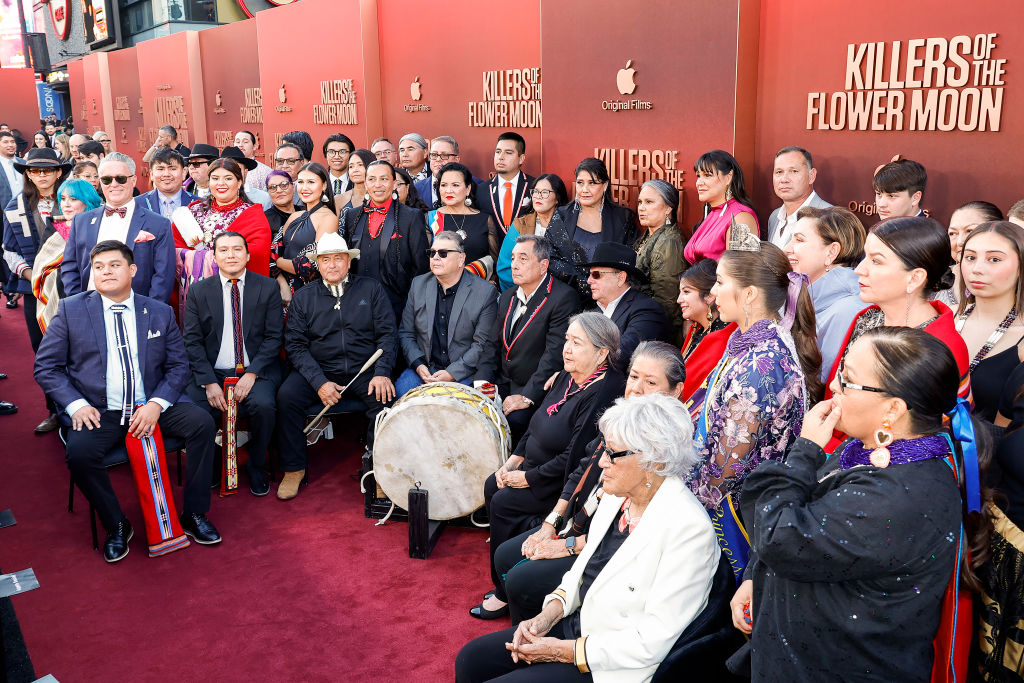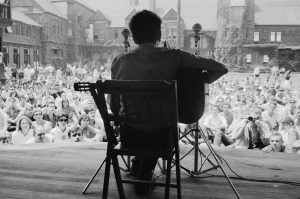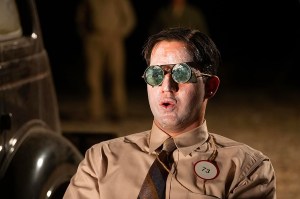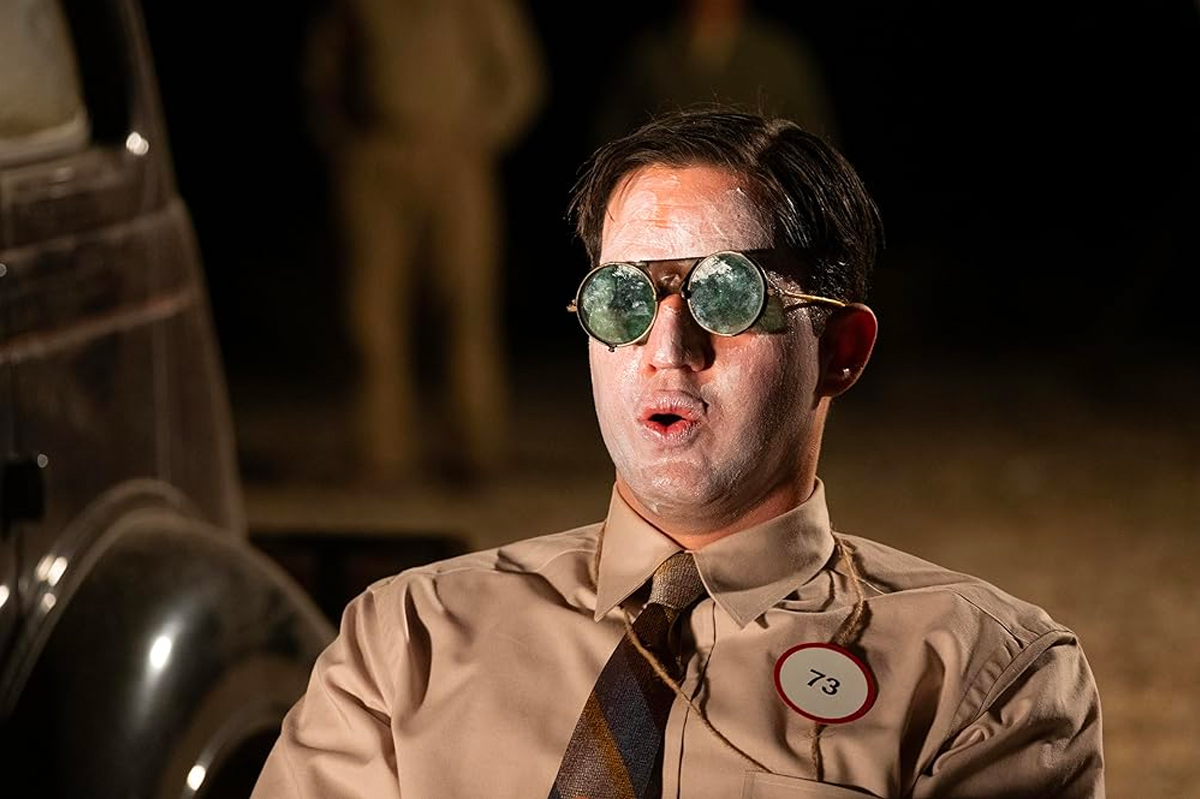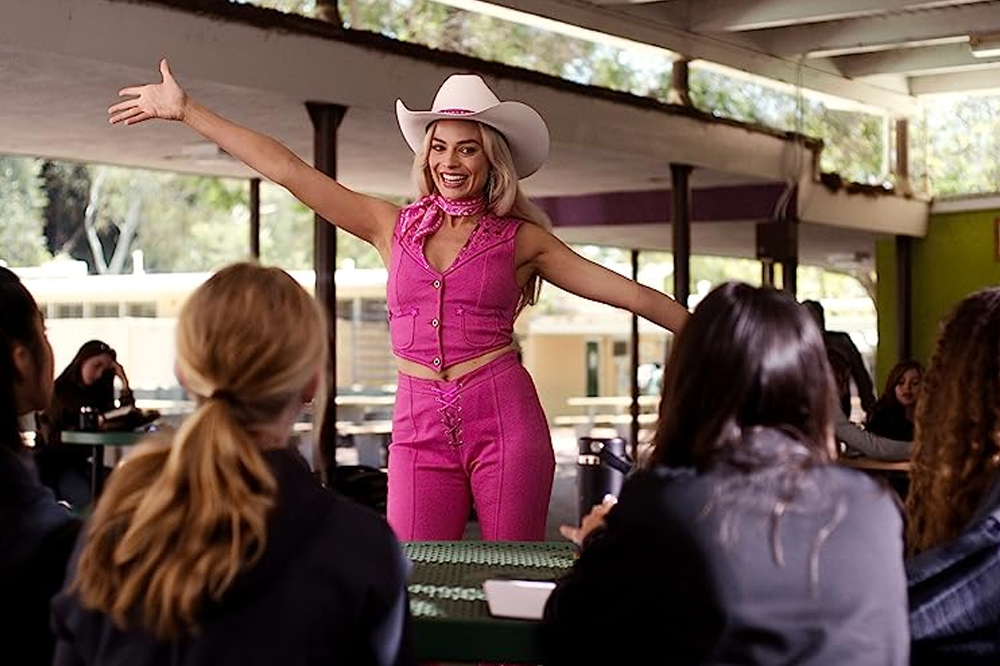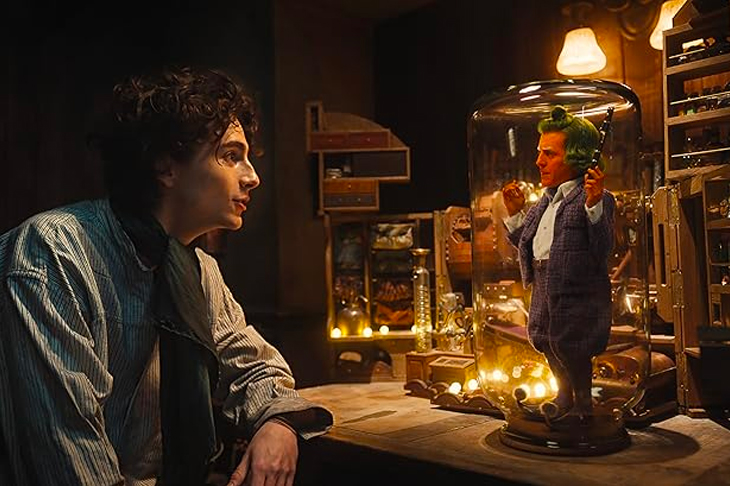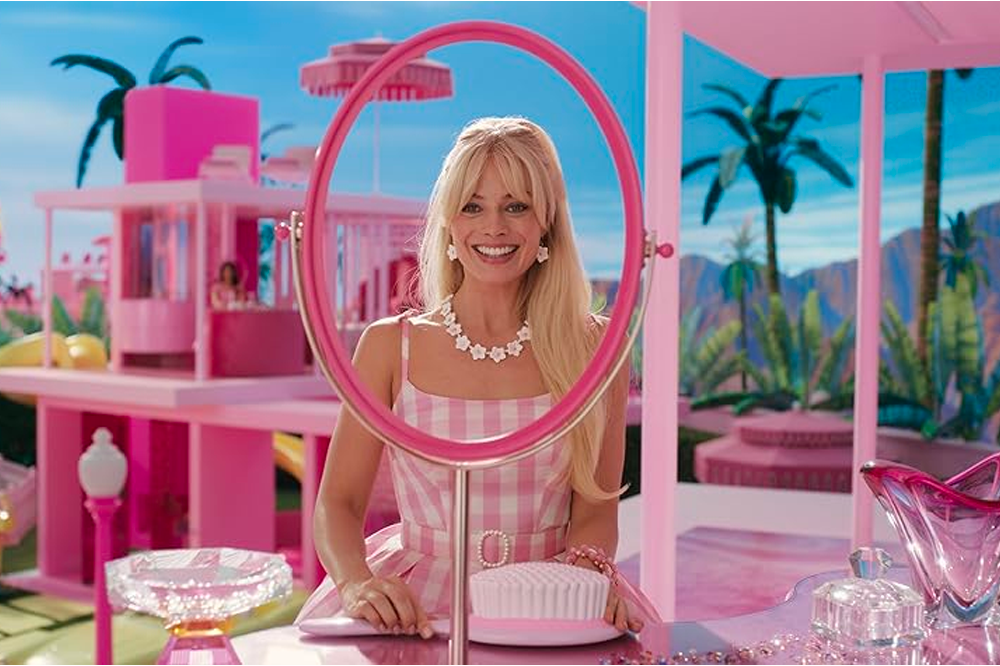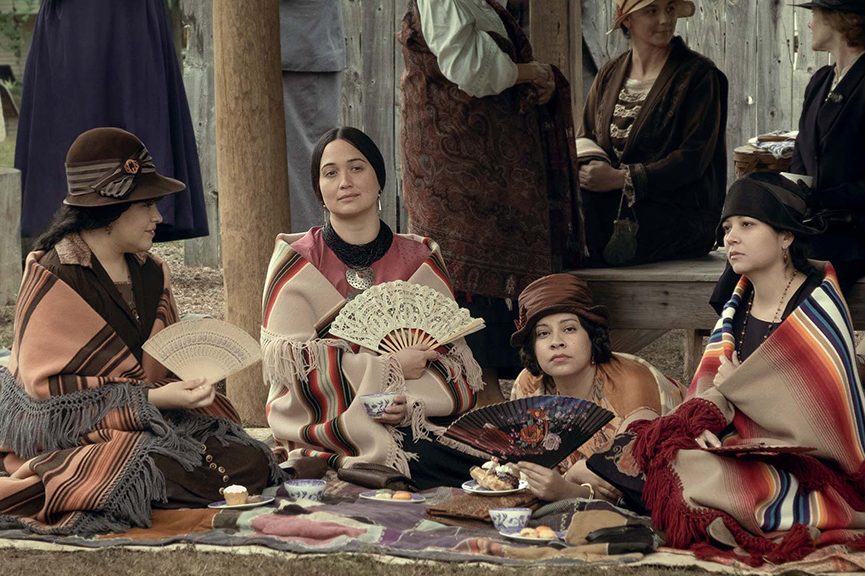It happens to be a truth of modern travel: airports as destinations in themselves, designed to provide travel needs, shopping delights and above all, entertainment. Heathrow’s Terminal 2, the Queen’s Terminal, pays homage to the late Elizabeth II, who gave her blessing to the Harrods and Fortnam & Mason stores that line the waiting areas. New York’s LaGuardia has become a paean to the subway system, replete with murals and other memorabilia of that venerable institution. Las Vegas’s Harry Reid International Airport is a casino before the casino — try your luck before hitting the strip.
Into this tradition, Tulsa International Airport in Oklahoma falls. A mish-mash of everything Oklahoma, including a Billy Parker Pusher Plane, an early plane modeled after the Wright brothers’; the Discover Tulsa store, which features Tulsa-themed gifts, such as barbecue sauce from Stan’s Smokehouse and Oklahoma-made Bedre chocolate; and lastly, but not leastly, an expansive, brightly colored mural — not unlike one crafted by Diego Riviera for the great industrialist Henry Ford — giving credit to the city’s founding fathers: the wildcatters, the bankers and the engineers who discovered oil in this former Native American territory.
Panorama of Petroleum by artist Delbert Jackson is fifty-six feet long. It’s vastly detailed and even a bit cinematic. It purports to illustrate an American dream, as in the processes behind finding and producing oil. It features the faces of twenty-two Tulsa oilmen — the founding fathers of Oklahoma’s generational wealth and industry — imposed on the bodies of roughnecks, geologists, engineers and the men who made the industry tick. It’s also profoundly inaccurate, according to several journalists, art historians, scholars and Martin Scorsese, who recently adapted Killers of the Flower Moon for theaters. The 2017 bestselling book by journalist David Grann details the “Osage Reign of Terror” in which dozens of Osage Indians were murdered for their oil-rich land in the early 1920s — a nonfiction counter-narrative to Panorama of Petroleum.
Yet in the metropolis once dubbed the “Magic City” by former president Harry Truman, inventive thinking remains.
“Just because the Catholic Church is riddled with abuse doesn’t mean you take down every crucifix. What does the Osage Tribe and the murders on Osage land have to do with the discovery of oil outside of their nation?” says Michelle Place, the director of special projects at Tulsa Historical Society. “Many people who were in the oil business were Native Americans. Think no further than Thomas Gilcrease.
“I disagree with your broad brush approach to Oklahoma’s history. There is so much more to the story. Be careful of hasty generalizations.”
Point taken. Some prevailing Oklahoma history: long before the onset of the oil booms, the state’s Native Americans — Chickasaw, Comanche, Osage, Cherokee and other tribes — had tapped into many natural oil and gas seeps, using the viscous black liquid as medicine. Even before white settlers started coming in droves after the Oklahoma Land Run of 1889, they found they could also use the same stuff for such things as light and heat (igniting fires), insulation or waterproofing and lubrication. Enter the automobile engine and boom! The Native Americans discovered that the terrible farming soil that they believed would finally keep the white man away drew them by the thousands.
Historians try to pin down the narrative of the oil business to one person, but it’s impossible. Almost simultaneously, countless men — railroad workers, calvary soldiers, immigrants and drifters from the Midwest — landed in Oklahoma to mine “black gold.” Some legitimately leased acreage from the Native Americans… and ultimately paid pennies on the dollar after mining it. Others intermarried into tribes and used custodial statutes to control the “head rights” of their families. Several, according to Grann, killed their wives and other family members by either poisoning or shooting or involving them in “accidents” — usually after imbibing them with alcohol or drugs. These murderous men then inherited the land, the oil and the profits that tribal people had previously shared equally.
But when the Smithsonian Institute in Washington needed some money and a dazzling display for its Museum of History and Technology — the precursor to the now-standing National Museum of American History — DC looked to the oil titans of Oklahoma. In 1967, those millionaire goliaths gave it the Hall of Petroleum, a year-long revisionist exhibition designed “to give the public some conception of the involved nature of the processes of finding and producing oil and its preparation for consumption — whether by automobiles, airplanes, power stations, household furnaces or the petrochemical industry,” wrote Philip W. Bishop, author of the exhibit’s catalog, Petroleum.
To give credit where credit was due, they had also turned to Delbert Jackson, a commercial artist from Tulsa who worked for Standard Oil-owned Amoco (American Oil Company). In 1964, Jackson set to work painting (with Amoco-made polymer tempera paint) his vision of the oil industry in three distinct phases: Production of Crude Oil, demonstrating the installation of a “christmas tree” valve; Connecting the Pipeline, depicting an oil-lease signing in front of a refinery; and Exploration, showing geologists studying rocks and samples.
Before thousands of tourists entered to see rows of geysers and pumpers, oil and gas signs, and models of the machines that pulled crude out of the ground, including a horse-powered machine called the Corsicana rig, however, they passed Jackson’s mural: the paean to such men as Ted C. Bodley, former president of Mohawk Petroleum Co. (later sold to Koch Industries), pictured as a foreman; Walter Helmerich II, former chairman of the board of Helmerich & Payne (a company with a current net worth of $4.5 billion) portrayed as a pipe layer; and John Williams, founder of the Williams Companies, painted as a pipe joiner. They were all supposedly depicted “for the most part” working at the jobs they performed at the beginning of their industry careers, according to the artist. In real life, by the 1960s, few of these men set foot on an active drilling site — unless inspecting it or posing for press. One Jewish man and one black man grace the mural: Jacob Blaustein, the founder of Amoco, and Riddick Vann, an Smithsonian exhibit designer. No women, additional minorities or Native Americans otherwise feature.
“One of the oddest things about the mural, to me, is that all these oilmen are depicted working while completely ignoring the majesty of their surroundings — you can’t help [but] wonder if the artist may have been subversive,” says Michael Mason, founder of This Land Press, an alternative newspaper in Tulsa credited with exposing many long-buried truths of Tulsa. On a serious note, Mason adds, “it’s difficult to understand why anyone would want to be featured in the mural, or why Tulsa would want to impress this message upon its guests.”
Yet, he sided with late journalist and “historian of Tulsa’s darkest times” Lee Roy Chapman, who “believed that we should not remove unpleasant histories from the public view, but add explanatory placards so that the object becomes a badge of shame that encourages dialogue and reconciliation.”
Other experts agree with Chapman, although they see the mural as less discursive.
“Jackson’s mural is far less ambitious in scope than, say, Diego Rivera’s Detroit Industry (1933) or Thomas Hart Benton’s America Today (1930),” says Emily Warner, an Art History professor at the University of Oklahoma and a former fellow of the Smithsonian American Art Museum. “In those murals, the artists were trying to say something about the nature of modern life itself, at a moment when industrial technology had radically transformed it. Jackson isn’t going after as big or grand a subject, and by the time he’s painting (the 1960s), this kind of industrial technology doesn’t feel ‘new’ or disorienting to people in the same way.
“Rather than commenting on the world-changing transformations of industrial technology, Jackson is simply offering a view of the oil industry, and making the case for Tulsa’s prominent place in that industry.”
But the mural in DC was only meant to be short-lived. By the time the petroleum exhibit closed in 1968, oil production in the United States started to decline. The painting was tucked away in Washington, then at the Texas state fairgrounds in Dallas — no one knows why. Texas state administrators thought Tulsa might be a better home for it. Thirty years later, the Helmerich Foundation and the Amoco Foundation — under the direction of the Thomas Gilcrease Museum and at a cost of $200,000 — brought Panorama of Petroleum to the Concourse B baggage claim at the airport, where it stands today. Then Mayor Susan Savage — a granddaughter of the industry — said the mural’s new home would welcome visitors with Tulsa’s main reason for existence as a city. “The airport also made sense because the mural features twenty-two oilmen who are significant Tulsans in our city’s economic and philanthropic history… and it enables Tulsa to share that history to travellers from around the world… many of whom would be significant businessmen and women themselves,” says Jim Langdon, a local journalist who runs Tulsa People magazine.
An hour north of the Tulsa International Airport, in Pawhuska, Oklahoma, however, is another panorama — a photograph of members of the Osage Nation standing side-by-side along with their white neighbors. Removed from that photograph, according to journalist David Grann, who passed Panorama of Petroleum with every trip there from 2013 to 2017, is a panel that shows one of the main perpetrators of the “Reign of Terror.” Grann couldn’t be reached for comment, but in an interview given to Rogerebert.com about the forthcoming Killers of the Flower Moon (released October 20), he described the “culture of complicity” that he discovered surrounding the murders of Osage Indians for head rights. “(The story) was about the guardians who were complicit. There were lawmen and a sheriff; there were prosecutors who were complicit, sometimes directly, in the murders or covering up the murders. Some morticians would cover up bullet wounds. Doctors had administered poisons; they were complicit in their silence.”
“How much is this still living history? We are not talking about colonial times; we are talking about the 1920s; this was recent history.”
Grann said also that he believed the murderers and the system had tried consciously to erase this history. “The Osage nation is deeply, intimately familiar with their own history, as are others, but people outside the nation have erased this from our concept. I think it’s important to reckon it… You can’t restore justice when there are these kinds of crimes you can’t bring back life. But hopefully, you can at least begin to restore a sense of the past. And in doing so, hopefully, learn something about the kind of people in the nation you want to be in the future.”
None of the administrators of the Tulsa Airports Improvement Trust, nor prominent oil philanthropic trusts, including the Kaiser Family Foundation, nor art museums, such as Gilcrease, returned repeated requests for comment on either Killers of the Flower Moon or Panorama of Petroleum. It seems as if Tulsa, thanks to the many dust-ups surrounding the 1921 Race Massacre, is tired of apologies and explanations.
Where does that leave Panorama of Petroleum? Still standing.
“You are spot on looking for diversity to be reflected at the airport. Blacks were not allowed to work in the oilfield, for example. Why not commission another mural of diversity or tell that story in a different way?” Place, of the Historical Society says. “Another suggestion. Write and mount text explaining the segregated nature of the mural…”
Langdon agrees. “David Grann’s book is excellent. I have not seen the soon-to-be-released movie. The “Osage Reign Of Terror” was awful and a totally sad and significant human ‘event’ in Oklahoma history. I would love to see a mural at the airport reflecting Oklahoma’s Native American history and significance… a source of pride in our state…”
But ultimately, as another inconvenient historical narrative about Tulsa hits international terrain, at home it is kicked under the tarmac. “It’s the Airport Authority who manage this public place and made the decision about what is appropriate. I am happy to discuss Tulsa, both its unpleasant but true history and good times as well,” Place says. “But, I am not going to debate whether the mural at the airport is right, wrong, should be altered to suit a false narrative or moved to a different location.”



